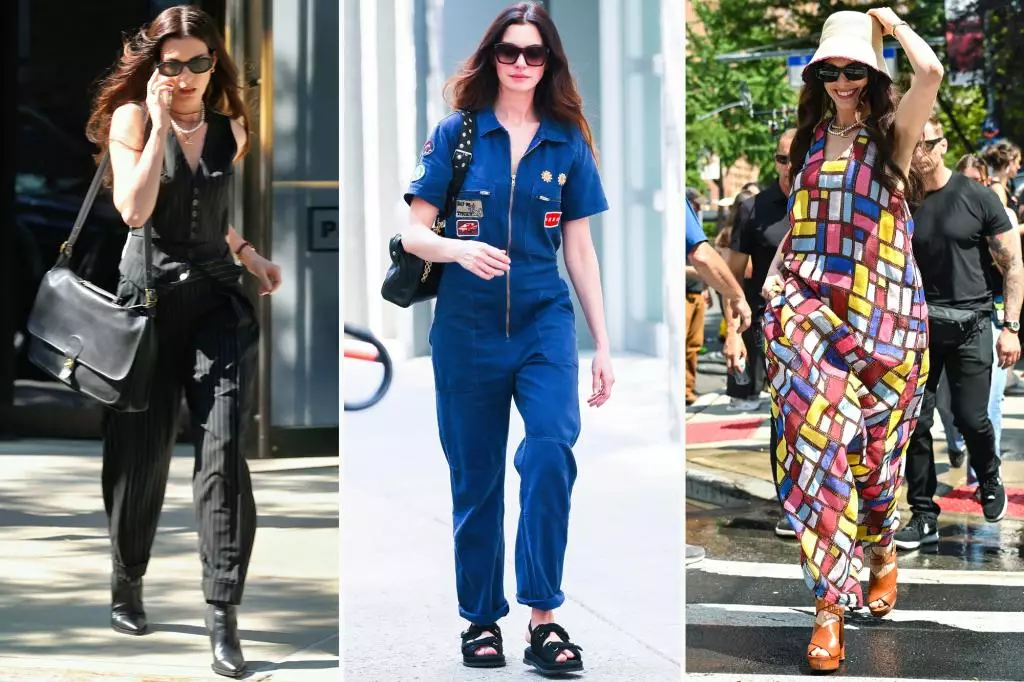The upcoming sequel to “The Devil Wears Prada” underscores a compelling truth: fashion is more than clothing—it’s a powerful form of storytelling and character development. As filming commences in New York City, anticipation builds around how the narrative will intertwine with striking visuals. Returning cast members like Anne Hathaway and Meryl Streep promise to elevate the storytelling with their compelling portrayals, but it’s the costumes that will truly steal the spotlight. The original film set a benchmark for fashion’s intersection with narrative, and the sequel appears poised to do the same, emphasizing that style remains a vital character in cinematic worlds.
The inclusion of high-profile new cast members indicates an effort to refresh the narrative while maintaining the glamour that fans expect. Yet, what remains truly fascinating is how costume design continues to serve as a narrative device that reveals character evolution, social status, and personal growth. While there’s uncertainty about Patricia Field’s involvement, what’s clear is that the visual language of fashion will remain at the heart of this story, reaffirming its cultural importance.
Fashion as a Reflection of Power and Aspiration
The glimpses we’ve seen of the wardrobe evoke more than just style—they symbolize power, status, and personal identity. Take Anne Hathaway’s portrayal of Andy Sachs; her outfits are carefully curated to showcase her transformation from an overwhelmed assistant to a confident fashionista. Her accessorizing details—a luxurious beaded choker, exquisite jewelry pieces surpassing average earnings—highlight the stark contrast in economic realities, accentuating her ascent and ambitions. Her choice of high-end garments like Gabriela Hearst’s patchwork maxi dress and Chloé platforms demonstrates how fashion acts as a bridge between aspiration and achievement.
Similarly, the casual yet opulent look, with designer sneakers and relaxed denim, reflects a nuanced narrative of comfort meeting style. It suggests that even casual wear can be purposeful when it’s layered with meaning through accessory choices. These wardrobe selections aren’t just about aesthetics—they’re statements of personality, confidence, and social positioning, illustrating that style is a language that communicates far beyond words.
Fashion’s Enduring Influence Beyond the Silver Screen
What’s remarkable about the ongoing fascination with films like “The Devil Wears Prada” is how they shape and mirror societal attitudes toward fashion. They remind us that clothing is an extension of our identity—an armor that guards or displays our ambitions. The film’s wardrobe aligns with modern fashion values—luxury, innovation, and individuality—serving as a reminder that style is as vital in our daily lives as it is on screen.
Moreover, the film’s attention to detail emphasizes that fashion is an ever-evolving mix of art and strategy. The rolling out of exclusive items like Bulgari rings, Fendi bags, and vintage pieces is a testament to how fashion retains its aspirational allure. For viewers, it becomes an inspiring reminder that dressing well isn’t superficial but empowering—an act of embracing one’s identity and asserting presence in a crowded world. The sequel promises to reinforce this narrative, proving that fashion remains an unstoppable force shaping cultural dialogues and personal narratives alike.

